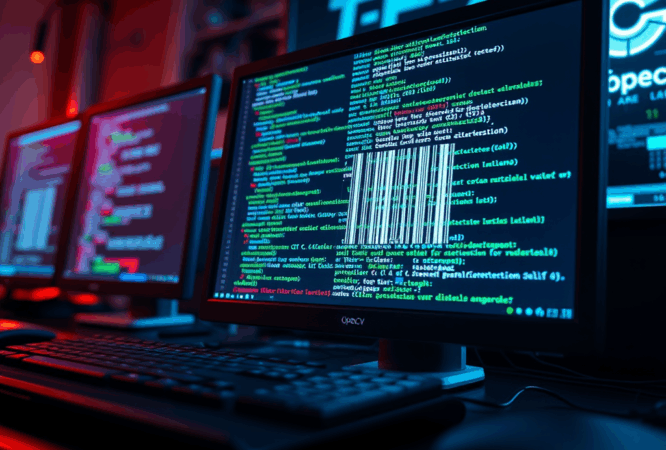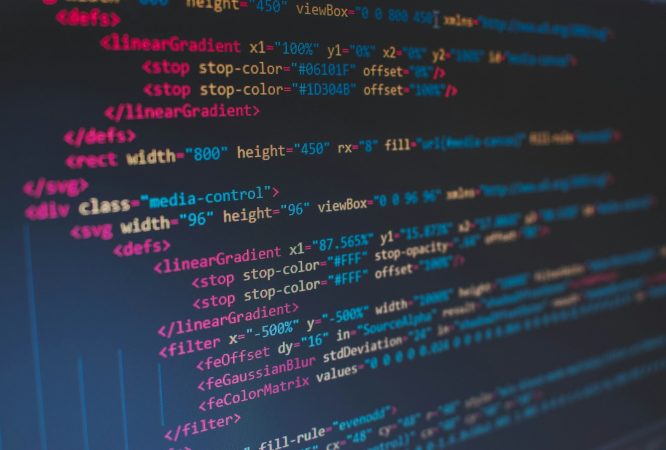Python for Beginners

This is a full special self-learning course that has been developed for anyone interested in learning Python on their own time. Python is a very powerful programming language and is used in various scenarios, the most recently popular being Artificial …
Python is a very powerful programming language and is used in various scenarios, the most recently popular being Artificial Intelligence. But Python can be used for other tasks such as data science and data analytics (Python vs R), games, web, and desktop applications.
A popular enquiry has been “What programming language do I learn first?” This can be viewed from several perspectives. For instance, personal interest, learning curve, language difficulty within the context of other languages, and more importantly, its relevance in the present day and tomorrow. It is clear that one popular area today is Artificial Intelligence (AI), and it is likely to remain so for coming years. If you are keen to learn AI, then it is often natural that you would go for a language like Python. Ultimately, you do not just learn how to build machine learning models, you acquire more skills to do more, like automating tasks in tools such as Excel, Word, PowerPoint, for file management, device-to-device communication, or cloud interactions.
If you are a beginner programmer, this course is designed to help you take your first steps into the programming world! If you’ve ever wanted to learn how to write code but were unsure where to begin, this course is perfect for you. Python is one of the most popular programming languages in the world, known for its simplicity, versatility, and power. As mentioned earlier, it is widely used in fields like web development, data analysis, artificial intelligence, game development, and more. By learning Python, you’re unlocking opportunities to work on exciting projects and solve real-world problems. Stay with CulerLearn and obtain direct support on your IT journey.
Why Learn Python?
Python is an excellent language for beginners for several reasons:
- Easy to Read and Write: Python uses simple syntax, making it easy to understand even if you have never written any code before.
- Versatile: From creating websites to analyzing data or even building video games, Python can do it all.
- Huge Community Support: As one of the most popular languages, Python has an enormous community of developers ready to help and share resources.
- High Demand: Python skills are highly sought after in the job market, making it a great investment in your future.
In this course, we hope to keep you engaged in learning and loving how to program in Python. You do not need any prior programming experience. All you will need is curiosity, a willingness to learn, and access to a computer.
What Can You Expect?
Over the next few weeks, we will guide you through the basics of Python programming. You will not only learn how to write code but also understand how to think like a programmer. This course combines theoretical concepts with practical assignments to ensure you get hands-on experience from day one.
At the end of this course, you should:
- Be comfortable with Python fundamentals.
- Have the skills to write simple programs and solve beginner-level coding problems.
- Understand how to break down problems into logical steps and implement solutions in Python.
- Be able to think like a programmer when you encounter problems that need to be solved programmatically.
This course is a stepping stone into the programming world, and we hope it will spark your curiosity and passion for coding. So, let’s get started on this exciting journey.
What You Will Learn
By the end of this course, you should have gained knowledge and skills in the following areas:
- Python Basics:
- What is Python, and why use it?
- Setting up Python on your computer.
- Writing your first Python program: “Hello, World!”
- Working with Data:
- Variables and data types (strings, integers, floats, and booleans).
- Input and output in Python.
- Basic arithmetic and logical operations.
- Control Structures:
- If-else statements to make decisions in your code.
- Loops (for and while) to repeat tasks efficiently.
- Functions:
- Understanding what functions are and why they’re useful.
- Creating your own functions to organize and reuse code.
- Working with Collections:
- Lists, tuples, dictionaries, and sets.
- How to store and manipulate multiple pieces of data.
- Error Handling:
- Common programming errors and how to fix them.
- Using try-except blocks to handle exceptions.
- File Handling:
- Reading from and writing to files in Python.
- Introduction to Libraries:
- What are libraries, and how to use them?
- A beginner’s look at Python’s popular libraries, such as
mathandrandom.
How the Course is Structured
This course is structured to make learning both fun and manageable. Here are some guidelines for how the course works :
- Chapter and Lessons:
- The content is spread across chapters and sub-lessons. Each lesson covers key Python concepts with examples. They are designed to be concise and beginner-friendly. The chapters provide a structured approach to using the content. However, we advise that you complete each week before proceeding to the next week for effective learning and assimilation. Concepts discussed later will build upon prior concepts.
- Chapter Exercises and Assignments:
- At the end of each lesson, you’ll get an opportunity to try out a few exercises. The exercises come with solutions that you can use to compare with your answers. We strongly advise that you take time out to do all the exercises to reinforce what you’ve learned. Make sure you understand the concept in the current section before moving on to the next section.
- A quiz follows after each chapter. This would be used to evaluate your performance. It also provides an opportunity for you to evaluate your performance based on what you understand so far.
- At some point, you would be able to request direct tutor engagement during the course.
- Support and Community:
- Join the course online forum to ask questions, share progress, and connect with other learners.
- There shall be regular live Q&A sessions with the instructor.
- Completion Certificate:
- At the end of the course, you will receive a certificate of completion.
This course has been designed to fit a flexible schedule. Whether a student, a working professional, or simply curious about coding, you can learn at your own pace.
About Your Tutor
Dot has nearly three decades of computer programming experience, with vast industry experience in systems design, software development, Artificial Intelligence, and Computer Vision. With an Electrical/Electronic Engineering background, he has an MSc in Mobile App Development and a PhD in Artificial Intelligence and Edge Computing. He has taught at higher education levels in the UK as a Lecturer in Games Development and is certified as an Associate Fellow in Higher Education in the UK. He loves technology and continuously explores how it could be used to improve lives by creating unique experiences. He is also passionate about teaching others what he knows and guiding students to use technological tools to create new systems. You can access his LinkedIn profile here – LinkedIn Profile
Errata
We have tried to be as accurate as possible in the preparation of this course. Nonetheless, we are open to suggestions for modifications due to errors discovered within the text. In the case where you encounter any errors, please contact us to correct the error. We would sincerely appreciate this. Thanks.
Important: How to Improve Assimilation
As you go through any of our programming courses, make sure to have one or more A4 paper by your side with a pen. Try to write down some of the code on paper before typing them into the computer. This is an often ignored but important learning strategy. Psychologically, the first stage of learning involves visualising the content. The content goes into short-term memory. Your brain does minimal processing of the content at this stage since you do not directly utilise it. However, when you write down the content, your brain needs to interpret it before enabling you to write it down. This helps greatly with retention. This dynamics becomes familiar when you compare watching a video tutorial about a subject vs reading a book on the same subject. In this case, this strategy helps you with understanding and assimilating the syntax of the programming language. This is how we learnt as well and it worked for us.
Recommended Books (Amazon)
In addition to learning using this course, we recommend that you buy one of the following books to practice alongside this course. Alternatively, you could complete the course and then buy one of the books to improve your learning. The chapters in the books are not aligned with the course curriculum but they provide you with real scenarios that you can immediately apply (such as in the first book).
Curriculum
- 13 Sections
- 107 Lessons
- 3 Weeks
- Chapter 1: Introduction to Python and Setting Up Your EnvironmentWelcome to Your First Lesson! In this lesson, we’ll introduce you to Python, explain why it’s a great first programming language, and guide you through setting up Python on your computer. By the end of this lesson, you’ll have everything ready to write your first Python program.7
- Chapter 2: Understanding Variables and Data TypesIn Python (and programming in general), a variable is like a container that stores data. You can think of it as a label that gives a name to a value so that you can refer to it later in your program. Variables allow us to store, retrieve, and manipulate data efficiently.10
- 2.12.1 What Are Variables ?25 Minutes
- 2.22.2 Naming Rules and Conventions for Variables30 Minutes
- 2.32.2.1 Exercise1 Hour
- 2.42.3 Common Data Types in Python: Strings, Integers, Floats, and Booleans25 Minutes
- 2.52.3.1 Exercise1 Hour
- 2.62.4 Type Conversion20 Minutes
- 2.72.4.1 Exercise2 Hours
- 2.82.5 Input and Output in Python30 Minutes
- 2.92.5.1 Exercise2 Hours
- 2.102.6 Quiz10 Minutes10 Questions
- Chapter 3: Basic Operators and ExpressionsIn this chapter, you will learn how to perform calculations and make logical comparisons using Python's built-in operators. Mastering these operators will help you write more powerful and efficient expressions in your programs.10
- 3.13.1 Arithmetic Operators25 Minutes
- 3.23.1.1 Exercise1 Hour
- 3.33.2 Comparison Operators20 Minutes
- 3.43.2.1 Exercise2 Hours
- 3.53.3 Logical Operators20 Minutes
- 3.63.3.1 Exercise1 Hour
- 3.73.4 Combining Operators and Expressions15 Minutes
- 3.83.4.1 Exercise2 Hours
- 3.93.5 Exercise: Building a Simple Calculator2 Hours
- 3.103.6 Quiz15 Minutes10 Questions
- Chapter 4: Control Structures (Decisions and Loops)This chapter introduces decision-making and looping constructs that allow your programs to react dynamically to different inputs and conditions. You will learn how to use if-else statements for decision-making and loops like for and while to automate repetitive tasks. By the end of this chapter, you'll be able to control the flow of your programs efficiently.12
- 4.14.1 The if-else Statement: Making Decisions20 Minutes
- 4.24.1.1 Exercise1 Hour
- 4.34.2 elif: Handling Multiple Conditions20 Minutes
- 4.44.2.1 Exercise1 Hour
- 4.54.3 for Loops: Iterating Over Sequences25 Minutes
- 4.64.3.1 Exercise1 Hour
- 4.74.4 while Loops: Repeating Tasks with Conditions25 Minutes
- 4.84.4.1 Exercise2 Hours
- 4.94.5 Breaking and Continuing in Loops20 Minutes
- 4.104.5.1 Exercise2 Hours
- 4.114.6 Assignment: Creating a Number Guessing Game2 Hours
- 4.124.7 Quiz15 Minutes10 Questions
- Chapter 5: Functions and Modular ProgrammingFunctions are essential for writing reusable and organized code in Python. In this chapter, you will learn how to define functions, pass arguments, return values, and understand variable scope. You will also explore how to use modules and the import statement to enhance code modularity and efficiency.12
- 5.15.1 What Are Functions and Why Use Them?24 Minutes
- 5.25.1.1 Exercise2 Hours
- 5.35.2 Defining and Calling Functions20 Minutes
- 5.45.2.1 Exercise2 Hours
- 5.55.3 Function Arguments and Return Values20 Minutes
- 5.65.3.1 Exercise2 Hours
- 5.75.4 Scope of Variables (Global vs. Local)25 Minutes
- 5.85.4.1 Exercise2 Hours
- 5.95.5 Using Modules and the import Statement15 Minutes
- 5.105.5.1 Exercise2 Hours
- 5.115.6 Assignment: Building a Unit Conversion Program2 Hours
- 5.125.7 Quiz15 Minutes15 Questions
- Chapter 6: Working with CollectionsThis chapter introduces Python's built-in collection types—lists, tuples, dictionaries, and sets—allowing you to store and manage groups of data efficiently. You will learn how to create, modify, and manipulate these collections using various methods and operations. Understanding collections is essential for handling complex data structures in Python programs.12
- 6.16.1 Lists: Creating, Accessing, and Modifying Lists10 Minutes
- 6.26.1.1 Exercise1 Hour
- 6.36.2 Tuples: Immutable Collections20 Minutes
- 6.46.2.1 Exercise1 Hour
- 6.56.3 Dictionaries: Key-Value Pairs30 Minutes
- 6.66.3.1 Exercise1 Hour
- 6.76.4 Sets: Unique Collections25 Minutes
- 6.86.4.1 Exercise1 Hour
- 6.96.5 Common Methods for Collections (e.g., append, remove, sort)25 Minutes
- 6.106.5.1 Exercise1 Hour
- 6.116.6 Assignment: Managing a Simple To-Do List1 Hour
- 6.126.7 Quiz15 Minutes10 Questions
- Chapter 7: Strings in PythonStrings are one of the most essential data types in Python, used to store and manipulate text. In this chapter, you will explore string indexing, formatting techniques, and useful built-in methods to modify and analyze text efficiently. Understanding strings will enhance your ability to process user input, format outputs, and work with textual data effectively.12
- 7.17.1 Basics of Strings and String Indexing20 Minutes
- 7.27.1.1 Exercise1 Hour
- 7.37.2 String Methods (e.g., upper, lower, split, join)20 Minutes
- 7.47.2.1 Exercise1 Hour
- 7.57.3 String Formatting Techniques25 Minutes
- 7.67.3.1 Exercise1 Hour
- 7.77.4 Escape Sequences and Raw Strings15 Minutes
- 7.87.4.1 Exercise1 Hour
- 7.97.5 Working with Multiline Strings25 Minutes
- 7.107.5.1 Exercise1 Hour
- 7.117.6 Assignment: Building a Text Formatter1 Hour
- 7.127.7 Quiz15 Minutes10 Questions
- Chapter 8: File HandlingIn this chapter, you will learn how to read from and write to files using Python, allowing your programs to store and retrieve data persistently. You will explore different file modes, handle file exceptions, and use the with statement for safer file operations. By the end of this chapter, you will be able to create, modify, and manage files efficiently in Python.10
- 8.18.1 Reading from Files: Open and Read Modes25 Minutes
- 8.28.1.1 Exercise1 Hour
- 8.38.2 Writing to Files: Write and Append Modes25 Minutes
- 8.48.2.1 Exercise1 Hour
- 8.58.3 Handling File Exceptions30 Minutes
- 8.68.3.1 Exercise1 Hour
- 8.78.4 Using with for Safer File Handling20 Minutes
- 8.88.4.1 Exercise1 Hour
- 8.98.5 Assignment: Building a Simple Log File Writer
- 8.108.6 Quiz15 Minutes10 Questions
- Chapter 9: Error HandlingIn this chapter, you will learn how to identify and manage errors in Python programs using exception handling techniques. Understanding common errors and using try-except blocks will help you write more robust and fault-tolerant code. By the end of this chapter, you'll be able to handle unexpected issues gracefully and improve the reliability of your programs.10
- 9.19.1 What Are Errors and Exceptions?20 Minutes
- 9.29.1.1 Exercise1 Hour
- 9.39.2 Common Python Errors30 Minutes
- 9.49.2.1 Exercise1 Hour
- 9.59.3 Using try-except Blocks for Error Handling30 Minutes
- 9.69.3.1 Exercise1 Hour
- 9.79.4 Raising Exceptions with the raise Keyword15 Minutes
- 9.89.4.1 Exercise1 Hour
- 9.99.5 Assignment: Writing a Robust Data Entry Program1 Hour
- 9.109.6 Quiz12 Minutes10 Questions
- Chapter 10: Introduction to Python Libraries (Intermediate)Python libraries extend the language’s functionality by providing pre-built modules for various tasks, from mathematical computations to data manipulation. In this chapter, you will learn how to install and use popular libraries like math, random, and datetime. Understanding these libraries will help you write more efficient and versatile Python programs.8
- 10.110.1 What Are Libraries?20 Minutes
- 10.210.1.1 Exercise1 Hour
- 10.310.2 Installing Libraries with pip20 Minutes
- 10.410.2.1 Exercise30 Minutes
- 10.510.3 Overview of Popular Libraries15 Minutes
- 10.610.3.1 Exercise1 Hour
- 10.710.4 Assignment: Using Libraries to Create a Simple Date and Time Tool1 Hour
- 10.810.5 Quiz15 Minutes10 Questions
- Chapter 11: Working with Data (Advanced)This chapter introduces essential techniques for handling and analyzing data in Python. You will learn how to read and write CSV files, perform numerical computations with NumPy, and create basic visualizations using Matplotlib. These skills are crucial for data manipulation, analysis, and presentation in real-world applications.8
- 11.111.1 Reading and Writing CSV Files20 Minutes
- 11.211.1.1 Exercise1 Hour
- 11.311.2 Introduction to NumPy for Data Manipulation20 Minutes
- 11.411.2.1 Exercise1 Hour
- 11.511.3 Basic Plotting with Matplotlib30 Minutes
- 11.611.3.1 Exercise1 Hour
- 11.711.4 Assignment: Visualizing Data2 Hours
- 11.8Quiz15 Minutes10 Questions
- Chapter 12: Final ProjectThis chapter brings together everything you've learned in the course by guiding you through the development of a fully functional Python program. You will choose a project, such as a budget tracker or a quiz app, and follow a structured approach to build and refine it. By the end, you'll have a completed project that showcases your Python skills and problem-solving abilities.5
- Chapter 132
You might be intersted in
-
2 Students
-
4 Weeks





